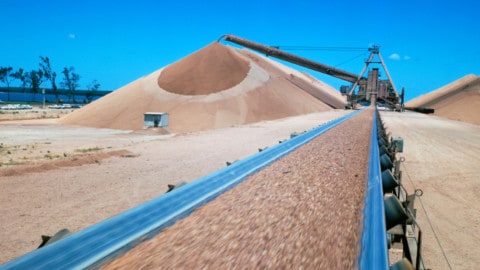In the Australian mining sector, reduced demand for commodities from end users such as China has led to a reduction in industry profit margins. In this post-boom scenario, mining companies are looking to do more with less.
Companies are therefore optimizing plant performance and enhancing productivity by minimizing downtime. Lowering downtime also helps cut down operational costs. This is expected to be the key driver for the growth of the Australian condition monitoring market for the mining sector.
Analysis from Frost & Sullivan on the Australian Condition Monitoring Market for the Mining Sector, estimates that the market revenues for 2012 were just over $55 million and this is expected to reach close to $120 million by 2017. Vibration monitoring remains the largest segment of the market (accounting for over 70 percent of the total market), with a higher number of portable units sold over permanent/online systems. This is followed by the thermography segment and finally the oil analysis segment. Distributors are the main channel to market.
As condition monitoring is a relatively new technology, mining companies are not fully aware of the benefits and consider it a capital-intensive product, rather than a tool that cuts operational expenditure. Market participants have to aggressively promote the advantages their product offers to make headway in the end-user sector.
“Mining companies need to be made aware that frequent machine failures and repairs can be avoided by performing predictive maintenance using condition monitoring,” said Frost & Sullivan Measurement & Instrumentation Research Associate Vivek K Reghu. “The scaling up of automation in future mining operations is also likely to drive demand for condition monitoring.”
However, straitened circumstances and a shortfall in adequately skilled device operators may still hold back investment in the technology in the short term. Once the mining sector rebounds, end users will be more willing to adopt the system, especially cloud-based condition monitoring systems, which have a more attractive cost- benefit equation than traditional technologies. Network-based condition monitoring requires mining companies to set up a data centre along with multiple servers that are dedicated to data collection and processing. The data will be accessible only to the systems in the network. Cloud computing will therefore help companies to reduce cost by decreasing the number of systems employed to collect data and negating the need to install high-level applications in each system.
Meanwhile, some past mining activities have stoked concerns regarding consequent environment deterioration. As a result, mining companies are now placing greater emphasis on addressing these issues during the project planning stage. This will lead to accelerated implementation of condition monitoring applications over the next three to five years.
“Mining companies will be looking to employ best practices for environmental and energy management in the project planning stage,” noted Reghu. “This translates into an opportunity for condition monitoring equipment suppliers to add energy management features to the existing product line and thereby improve perceived value.”
The Australian condition monitoring equipment market is highly competitive and is dictated by factors such as price and the delivery of service and support. With end users demanding lower prices, vendors need to look at ways to reduce cost to sustain profit margins. In this regard, large companies are making significant investments in R&D and are introducing better products at strategic and competitive prices. The need to provide post-sales support is crucial when deciding who should be awarded a contract. Most small companies are unable to provide this support; as a result, they lose the bulk of the business to their large counterparts. ■
This article was authored by Ivan Fernandez, Industry Director, Industrial Practice, Australia & New Zealand, Frost & Sullivan. For media queries or more information please contact [email protected]
















